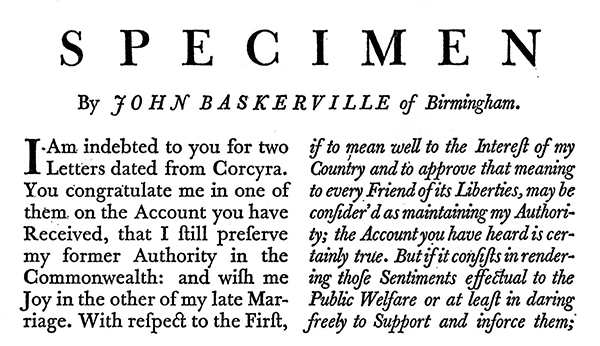
His typeface found little success inside Great Britain, but won respect in France and Italy after Baskerville’s widow sold his matrixes and punches to the French. Being a printer of specialist and elite versions of texts also did not help improve his standing. The resulting crispness in Baskerville’s work was not received positively then. He soon experimented on many printing technologies, from creating a printing ink to his own press that replaced the wooden platen of his time to brass. This stoked his interest in calligraphy, and this was reflected in the strokes and embellishments seen on his typeface. John Baskerville of Birmingham started out as a servant in a clergyman’s house, until his penmanship was noticed by his employer. Know why this is still one of the most sought-after and highly used fonts until today. Make sure to take advantage of the Baskerville font and use it whenever you can.Known for crisp edges, generous proportions, and high contrast, Baskerville was considered as a transitional typeface that was aimed to refine what is now known as old-style typefaces of the 1750s, especially those made by William Caslon. Besides all this, the font is also convenient for official documents. In addition to being used in books, this font is handy for creating logos, banners, brochures, posters, presentations, and many more. So, we understand that this font is trendy.

The first volume of Joseph Addison’s Works (1761) was published.This font has been used in works by well-known authors, such as: Many used it to create books in the seventies. The Baskerville font is a typeface that has been around for a long time now. is the publisher of this Baskerville font. The Baskerville PT was designed by Dmitry Kirsanov for Paratype.īaskerville font inspires many fonts (see the similar fonts section for a list).Libre Baskerville was designed by Impallari Type and published by Google.The following is a list of some of the fonts that have been created based on the design of the Baskerville font: However, despite its old style, it can attract visitors. Among its characteristics is the lack of serifs, making it suitable for pairing with sans-serif fonts such as Helvetica or Arial. The 12 styles of this font are much older, so its use at present is a bit less noticeable. In fact, the Baskerville font is so well-known that many people mistakenly think that these newer fonts are actually based on it. These fonts are more recent designs that have been popularized in the last several decades. The typeface is named after him.įutura, Univers, and Gill Sans.

Baskerville’s typefaces were inspired by the designs of John Handel, which are transitional typefaces to modern typefaces. It’s characterized by its geometric, serif-less lettering, except for the “J” and “Q.” It’s famous for its clarity and excellent legibility, making it popular because anyone can read it easily.īaskerville’s work brought about a marked improvement in the quality of printed works and is therefore a key figure in the development of the art of printing.

If you’re into typography and design, chances are you’ve heard of the Baskerville font. Baskerville is a transitional serif typeface designed in the 1750s by John Baskerville, an English typographer.


 0 kommentar(er)
0 kommentar(er)
